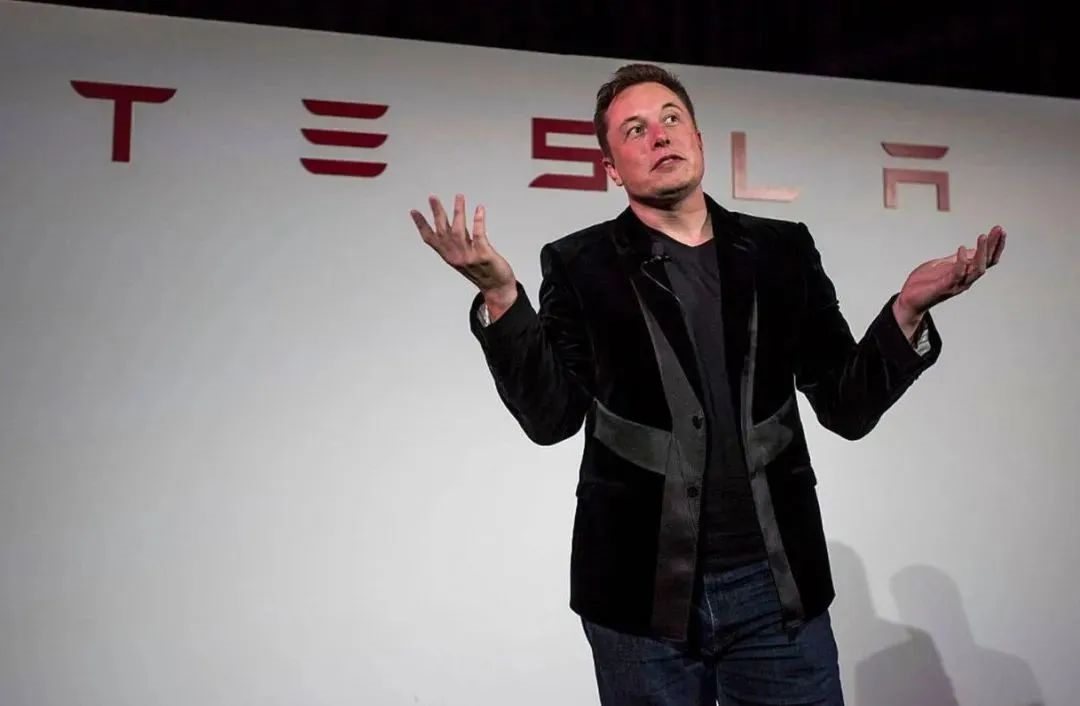Author: Michelin
It’s time for the automotive industry to write the “performance report”.
If sales KPI is an annual routine for car manufacturers, then in today’s automotive industry, the half of the “bragging rights” are supported by “smart electric cars”.
Intelligence and electrification have painted countless beautiful prospects for the automotive industry and have also created countless opportunities for “empty promises”. However, the ideal is full, the reality is skinny, and when each target is stated, it is impossible to predict what challenges it will face tomorrow. After all, on this road, there are not only KPIs from previous years to refer to, but also no stepping-stones to cross the river. This is why every goal related to intelligence and electrification sounds like “bragging rights”.
It is only when we look back at the end of the year that we realize that not every goal that sounds slightly exaggerated is “bragging rights”, and not every end of “bragging rights” is a face slap.
Let’s take a look at how many of the bulls that have been blown in the automotive industry’s technological field have been realized, and how many visions that attempt to change our lives have been realized, so we can see where smart electric cars are heading.
Those “promises” that directly hit range anxiety
If electric cars have a guilty conscience, it is probably “range anxiety”.
No indicator has ever touched both car manufacturers and users so much. They focus on the range, charging, and battery capacity and always hit the user’s heart directly. Therefore, the promises of car manufacturers to solve the range anxiety are more direct and numerous than in other areas. Let’s take a look at the outstanding ones among them.
“1000km range”
Counting the car manufacturers who have made the bold claim of “1000km range”, they probably occupy half of the automotive industry, and the other half is still entangled with “Why does an electric car need such a long range when a tank of gas can’t go for 1000 kilometers?”
Setting aside the debate, we have to admit that the bold claim of 1000km range has been achieved in 2022.
Firstly, via optimization of the battery pack, Aiways AION LX Plus achieved a range of 1008km on a single charge in mass production. Secondly, Mercedes-Benz EQXX concept car realized a long-distance sprint of 1200km in one direction through extreme optimization of energy efficiency.
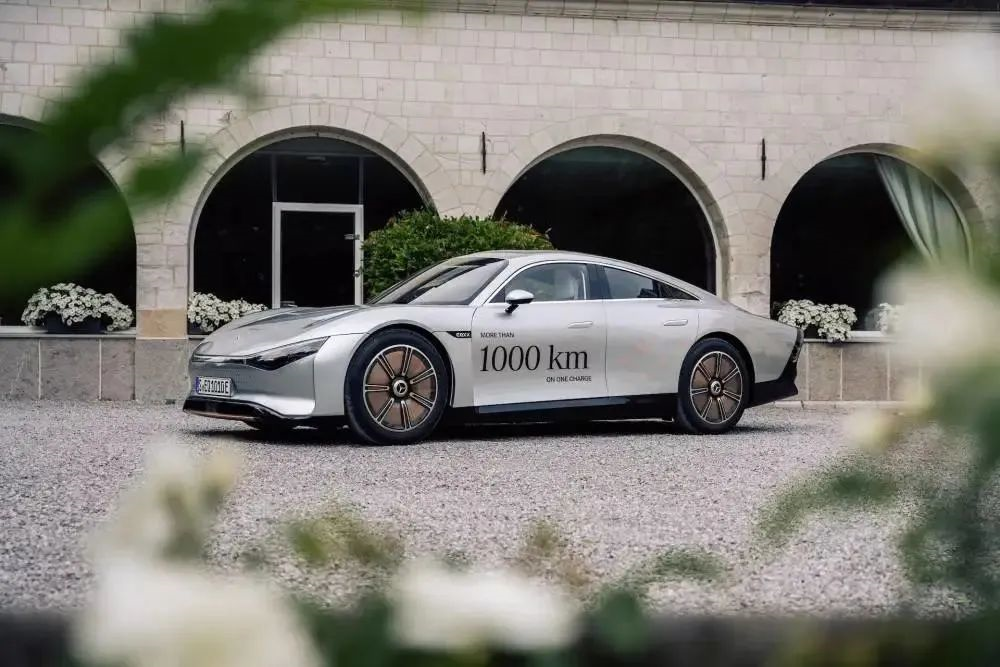 Compared to the debate over whether a 1000-kilometer range is necessary, this is more like a show of strength: whether stacking battery packs or optimizing energy efficiency, 1000 kilometers is not an insurmountable gap, whether in terms of battery density or energy efficiency. Whether there is a real need for mass-produced products with a 1000-kilometer range is a market consideration.
Compared to the debate over whether a 1000-kilometer range is necessary, this is more like a show of strength: whether stacking battery packs or optimizing energy efficiency, 1000 kilometers is not an insurmountable gap, whether in terms of battery density or energy efficiency. Whether there is a real need for mass-produced products with a 1000-kilometer range is a market consideration.
“150 kWh Semi-Solid-State Battery”
This “bull” is a sub-theme of the “1000 Kilometer Range”, and it is precisely because of the goal of a 1000-kilometer range that various companies have racked their brains over batteries: 150 kWh semi-solid-state batteries, graphene batteries, etc., all proposed concepts for long ranges. Among them, NIO’s 150 kWh semi-solid-state battery pack is the most anticipated.
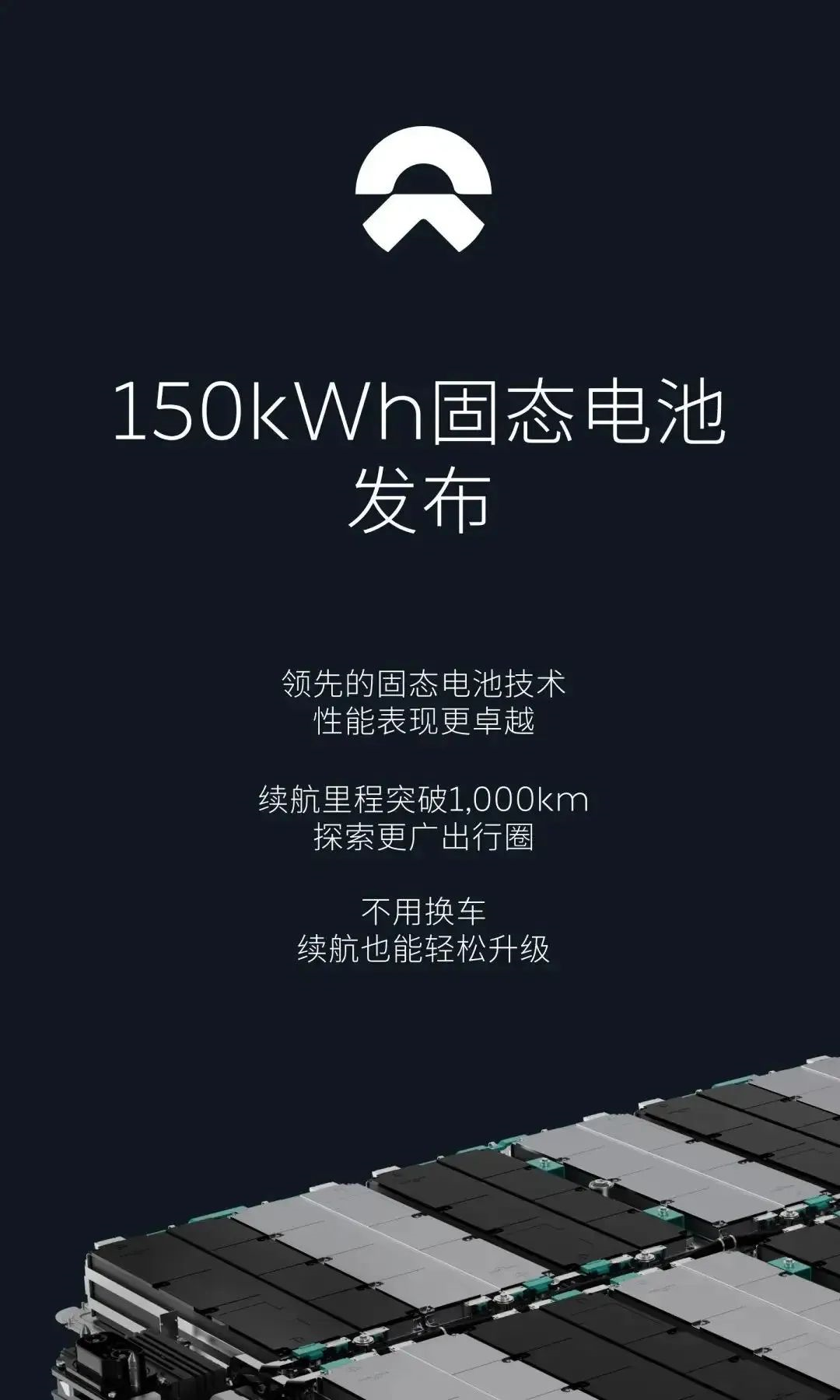
Accompanying the launch of the ET7 in early 2021 at NIO Day was a version with a 150-kWh battery pack and a range of 1000 kilometers. According to official information, this solid-state battery uses ultra-high nickel cathodes, pre-lithiated silicon-carbon anodes, and solid electrolytes (including solid and liquid). Its energy density can reach 350 Wh/kg, and its range can reach over 1000 kilometers.
However, by the last week of 2022, the 150 kWh battery pack had still not met the schedule for Q4 2022. According to Li Bin’s response, preparations for the 150 kWh battery pack are still underway.
But near the end of the year, the 150 kWh battery pack made another alternative appearance. We saw its shadow on the EC7 during the Ping An Festival NIO Day. I wonder how much longer we will have to wait for it?

Difficulties in Producing the 4680 Battery
Since the first appearance of the 4680 battery in 2020, it has become the focus of media attention at every subsequent Tesla press conference: when will production begin? When will it go into mass production?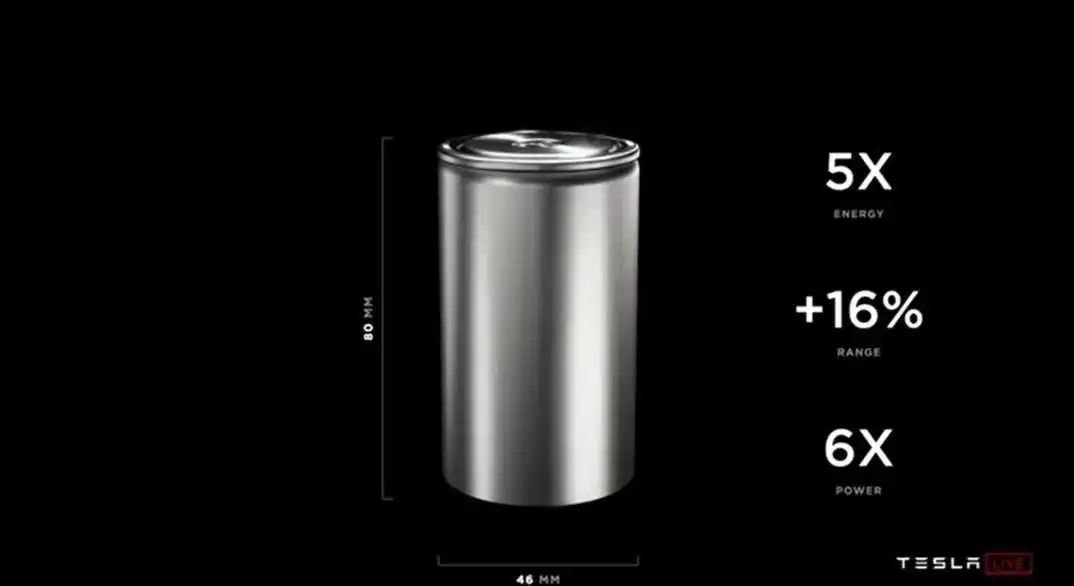
The 4680 battery, which increases the single-cell density by 5 times and reduces the cost by 56%, is a technology that can bring industry chain changes. At the financial report meeting one year ago, Musk also gave the deadline for the production of the 4680 battery, “Production will start in Q1 of this year at the Austin factory, and the annual production capacity will reach 100Gwh by the end of 2022, which can meet the needs of 1.3 million vehicles.”
Now, after a year of capacity climbing, the Austin factory’s 100th millionth 4680 battery was produced at the beginning of the year, which can meet the needs of 1,000 Model Ys; by the third quarter, the production of 4680 can finally meet the needs of 1,000 cars per week. According to the initial estimate, it has only reached 4% of the expected production capacity.

Even the first delivered Semi is still using 2170 batteries. It seems that the days of waiting for the “difficult to produce” 4680 battery will be long.
“Charge for 5 minutes and drive for 200 kilometers”
It is said that smart cars are becoming more and more like smartphones. The most similar one is this slogan that can be seamlessly switched: “Charge for 5 minutes and drive for 200 kilometers.”
It is impossible to trace who was the first to shout this slogan in the automotive industry, but countless car companies have shouted it: XPeng, GAC Aion, Dongfeng Railyway, BAIC Arcfox, etc.
The reason why they can shout this slogan is the same: the 800V high-voltage platform and ultra-fast charging technology.
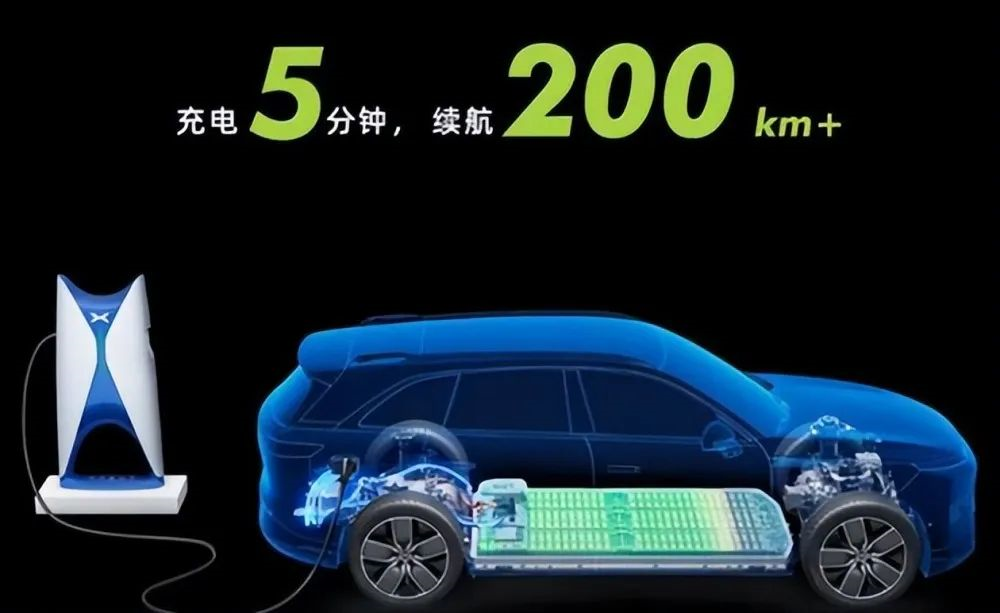
If we look at it from a product perspective, this “bull” has already been achieved: XPeng G9, BAIC Arcfox Alpha S, Aion V Plus 70, Audi e-tron, and even earlier Porsche Taycan. These models can support the ultra-fast charging of 350 kW or even 480 kW in theory, which can satisfy the slogan of “charge for 5 minutes and drive for 200 kilometers”. However, the gap between ideal and reality is that the new cars with 800V high voltage have already been launched, but the ultra-fast charging stations that support 480 kW are still on the way.We can refer to Tesla, which first launched its 250 kW ultra-fast charging technology. The first V3 Supercharging Station was built at the California Super Factory in 2019, and by the end of 2022, there were more than 40,000 standalone supercharging piles globally, with 10,000 supercharging piles in China and a densely laid-out fast charging network. However, to this day, we still encounter situations where the power of V3 supercharging piles falls far short of the maximum 250 kW in actual use.
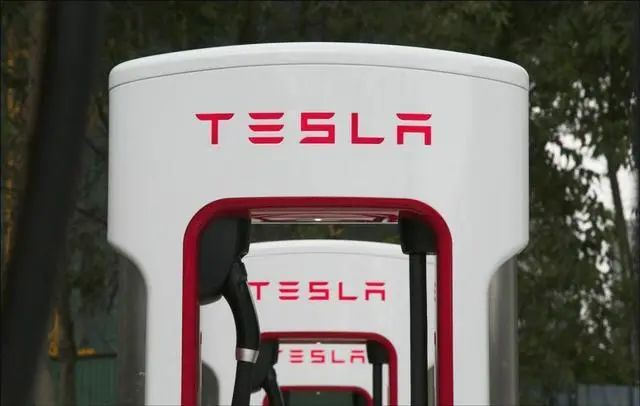
From the model and technology implementation of “recharge 200 km in 5 minutes” to actual usage in daily life, there is still a long way to go.
How much longer until autonomous driving is fully implemented?
2021 has seen a wave of revival for the autonomous driving industry. Whether it is the plans for mass-produced cars with sensors, computing power, or advanced driver assistance functions, people in the industry seem to have seen the light at the end of the tunnel.
At last year’s auto show, we saw a mass-produced Robotaxi with 50 sensors, heard the saying “if you have less than 4 sensors, don’t even talk”, and saw a demonstration of advanced driver assistance in urban areas. All of these made us believe that 2022 would be the year when the autonomous driving industry would take off.
However, it seems that progress has slowed down once again in 2022.
The FSD, King of Delayed Launches
“Within 2022, FSD will be pushed to all vehicles equipped with the system worldwide.”
This is probably the most passionate statement Musk made at the slightly conservative 2021 Q4 earnings call. As soon as he said it, speculation began to spread about “whether FSD will be pushed in China or not.”
However, facts have proven that the King of Delayed Launches is hard to predict for ordinary people.
As of AI DAY in 2022, the FSD Beta version has been used by 160,000 users, an 80-fold increase over a year ago. In November, FSD Beta V11 began to be pushed to testers, followed by a wider distribution to more North American users in the following weeks. V11 uses a single-stack system that is more fluid and intelligent in its decision-making process.

According to Troy Teslake, a supplier of Tesla, currently about 359,200 Tesla owners have purchased the FSD fully self-driving feature, of which 264,700 users are in the United States. It seems that the push scale has already exceeded 60%. I wonder how many more updates are needed from 60% to 100%?
The “Futures” of Urban Advanced Driving Assistance
If FSD represents foreign car companies, then the representatives of domestic advanced driving assistance are various city advanced driving assistance technologies such as Little X’s City NGP, NIO’s NOA, Jidu Auto’s NCA, and Hozon Auto’s NOH… (The combination of three letters “NXX” is almost not enough)
The starting point of the expectation was probably during the 2021 Shanghai Auto Show, when Huawei demonstrated a test video of urban advanced driving assistance using Jidu Auto’s demo car, which raised everyone’s expectations. Domestic intelligent driving high-end players led by Little X also shouted out their slogan “City NGP will land in the first half of 2022.”

From the first half of the year to the third quarter, Little X’s City NGP finally landed in Guangzhou, and in order to achieve this effect, the amount of code increased 6 times, and the number of perception models increased fourfold. At present, it can only be enabled on urban roads in Guangzhou, and other cities’ push updates still need to go through lengthy approvals, high-precision map promotion, and so on.
The partners on the road of urban advanced driving assistance are similar. Jidu Auto, who claims to be “the world’s first mass-produced car equipped with the full-stack Huawei smart car solution,” started NCA push in the city district of Shenzhen in October, and in Shanghai in December. It can implement autonomous cruising, unprotected intersection crossing, and close-range overtaking based on high-precision maps.
To be honest, an advanced driving assistance system that cannot access urban roads cannot be considered truly landed. The complex road conditions, dense traffic, irregular non-motorized vehicles, pedestrians, etc. in urban roads all pose a challenge to advanced driving assistance technologies. City advanced driving assistance is a competition between cities, and it also needs to be gradually promoted by one city after another.### “3 years, 30 cities, 3,000 vehicles”: the ups and downs of Robotaxi
If you happen to follow the Robotaxi industry at the beginning and end of 2022, you will most likely witness two opposite scenes – at the beginning of the year, various car companies announced their entry into the Robotaxi field with projects with L4 autonomous driving technology companies, including XiaoPeng, GAC, and Tesla; while by the end of the year, many L4 autonomous driving companies announced that they would focus on L2+ auxiliary driving businesses and working with car companies.
Amidst this back-and-forth, the Robotaxi industry has cooled down.
At the end of 2020, Baidu Apollo once shouted the slogan “3 years, 30 cities, 3,000 vehicles,” aiming to expand its fleet to 3,000 by 2023. However, as of the writing of this article, Baidu Apollo has just announced its plan to add 200 unmanned operation vehicles nationwide in 2023 – a major drop from their previous goal.
The cold market has also led to retracting targets of several car companies in the Robotaxi field, due to the long-tail technical difficulties of autonomous driving, and slower commercialization than anticipated.
This has led many to turn their attention to L2+ auxiliary driving, unmanned logistics and other attempts at commercialization, with the commercialization of Robotaxi taking a back seat. After all, only after going through this winter could we expect the coming of spring for Robotaxi.
The Smart Cabin of 2022 – Too busy.
Ever since the concept of the third space was given to the smart cab, it has led to countless functions beyond driving and riding, yet this year’s cabin is likely the busiest yet.The imagination of Third Space used to stay on relaxation, music, and video-watching. However, this year marks the official entry of Third Space into the gaming industry, with scenarios ranging from gaming, online courses, work, to even watching the World Cup. A series of “big items” such as refrigerators, TVs and big sofas are all stuffed into the cabin. It seems that even if one travels through a post-apocalyptic movie like “Survival of the Dead,” the protagonist can still win in the smart cabin till the end. However, the most representative among the numerous flags of Third Space’s intelligence cabin has to be gaming.
Since Musk showed off his new car machine based on AMD processors and played “Cyberpunk 2077” on Model S Plaid, various attempts have emerged on how to play games in car cabins and replace game consoles with car machines. Musk even said that he wants to move Steam onto the car.
And in 2022, the goal of moving game consoles onto cars was finally achieved. On the one hand, the ideal L9 used its custom Type-C cable to achieve the projection screen of Nintendo Switch; on the other hand, Tesla collaborated with Steam so that the vehicle dashboards of Model S/X could directly experience a large number of Steam games. Car machine games are no longer just small games for experience such as “eliminating calming” and “shouting dragons.”
Admittedly, Tesla challenged PS5 and used car machines to play games to demonstrate its own seat GPU’s “muscles.” But for those who love playing games, isn’t it a “more choice, more laughter” to have additional options of playing games in a quiet, closed environment with good audio and screen effects?
Conclusion
Ten years ago, Li Shufu said, “What’s so great about cars? It’s just four wheels, two sofas, and an iron shell, right?” Everyone laughed at this outsider’s rant. Ten years later, I don’t think anyone would say that Li Shufu and Geely are outsiders in the automotive industry. Of course, this was not achieved by “bragging,” but by drilling and exploring technology and products step by step over the past ten years.The most fascinating thing in the world is probably the “unknown”. It is the “unknown” that makes the goals set around intelligence and electrification nowadays appear to be “bragging”; and it is also the “unknown” that makes the young industry of intelligent electric vehicles so attractive. It is precisely because the goals that previously seemed like bragging have been achieved one by one, that intelligent electric vehicles have grown to where we are today.
We hope that there will be more achievements made in this industry next year, and fewer setbacks.
This article is a translation by ChatGPT of a Chinese report from 42HOW. If you have any questions about it, please email bd@42how.com.
